2) Which of the following types of joints lacks a joint cavity and is
held together by a fibrous connective tissue?
1. Fibrous
joints
2. Cartilaginous joints
3. Synovial joints
a) 1 only
b) 2 only
c) 3 only
d) 1 and 2
e) All of these choices
a
Which of the following types of joints do NOT have a synovial cavity? 1. Fibrous joints 2. Cartilaginous joints 3. Synovial joints
- a) 1 only
- b) 2 only
- c) 3 only
- d) 1 and 2
e) All of these choices
d
Which functional class of joints contains joints that are freely
movable?
1. Synarthrosis
2. Amphiarthrosis
3. Diarthrosis
a) 1 only
b) 2 only
c) 3 only
d) Both 2 and 3
e) All of these choices
c
Which of the following is a type of fibrous joint composed of a thin
layer of dense irregular fibrous connective tissue found between the
bones of the skull?
1. Syndesmoses
2. Gomphosis
3. Suture
a) 1 only
b) 2 only
c) 3 only
d) Both 1 and 2
e) None of these choices
c
A suture joint fits into which functional joint classification?
- a) synarthrosis.
- b) amphiarthrosis.
- c) diarthrosis.
- d) synovial.
- e) cartilaginous.
a
The epiphyseal plate in a long bone is an example of which type of joint?
- a) Gomphosis
- b) Suture
- c) Symphysis
- d) Synovial
- e) Synchondrosis
e
The joint between the first rib and the manubrium of the sternum is classified as
a) a synchondrosis.
b) a synarthrosis.
c) a cartilaginous joint.
d) All of these choices.
e) None of these choices.
d
Which of the following is NOT a common characteristic of synovial joints?
a) Contain a joint cavity
b) Are freely moveable
c) Articulating bones are covered with hyaline cartilage
d) Include elastic cartilage
e) Have ligaments holding the joint together
d
Which of the following is(are) made from dense regular connective tissue?
a) Ligaments
b) Articular cartilage
c) Articular fat pads
d) Synovial membrane
e) Synovial fluid
a
Which of the following structures include the fibular and tibial collateral ligaments of the knee joint?
a) Synovial membranes
b) Articular fat pads
c) Menisci
d) Extracapsular ligaments
e) Tendon sheath
d
Another term for menisci is
a) articular fat pads.
b) articular discs.
c) articular spaces.
d) capsular fat pads.
e) capsular discs.
b
Articular discs
1. maintain the stability of a joint.
2.
direct flow of the synovial fluid to areas of greatest friction.
3. are made of hyaline cartilage.
4. are only found in the
vertebral column.
a) 1 only
b) 2 only
c) 3 only
d) 4 only
e) 1 and 2
e
Which of the following structures is used to reduce friction in
joints?
1. Bursae
2. Synovial fluid
3. Accessory
ligaments
4. Elastic fibers
a) 1 only
b) 2 only
c) 3 only
d) 4 only
e) 1 and 2
e
Which type of motion results from relatively flat bone surfaces moving back and forth and from side to side with respect to one another?
a) Flexion
b) Extension
c) Gliding
d) Circumduction
e) Hyperextension
c
Which of the following represents a type of movement where there is a decrease in the angle between articulating bones?
a) Flexion
b) Extension
c) Gliding
d) Circumduction
e) Rotation
a
Bending the trunk forward at the intervertebral discs is an example of what type of angular movement?
a) Flexion
b) Extension
c) Lateral flexion
d) Hyperextension
e) None of these choices
a
Flexion and extension usually occur along which plane?
- a) Frontal
- b) Transverse
- c) Sagittal
- d) Oblique
- e) None of these choices
c
Moving the humerus laterally at the shoulder joint is an example of which type of movement?
a) Lateral flexion
b) Hyperextension
c) Adduction
d) Abduction
e) Gliding
d
Which type of movement involves a continuous sequence of flexion, abduction, extension, and adduction resulting in a distal body part moving in a circle?
a) Gliding
b) Lateral flexion
c) Hyperextension
d) Circumduction
e) Elevation
d
Which of the following is not considered a “special movement” that occurs at only certain joints?
- a) Depression
- b) Protraction
- c) Elevation
- d) Supination
- e) All of these are special movements
e
What type of special movement occurs in your clavicles at your acromioclavicular and sternoclavicular joints when you cross your arms in front of your body?
- a) Protraction
- b) Retraction
- c) Inversion
- d) Eversion
- e) Supination
a
Which special movement occurs when you bend your foot at the ankle in the direction of the foot’s superior surface as would occur when you stand on your heels?
a) Inversion
b) Eversion
c) Dorsiflexion
d) Plantar flexion
e) Supination
c
Which special movement involves moving your thumb across the palm to touch the tips of the fingers on the same hand?
a) Pronation
b) Supination
c) Eversion
d) Retraction
e) Opposition
e
Which of the following is NOT a structural category of synovial joints?
a) Planar
b) Hinge
c) Condyloid
d) Suture
e) Saddle
d
In which type of synovial joint does a rounded or pointed surface on one bone articulate with a ring formed partly by another bone and partly by a ligament?
a) Pivot joint
b) Planar joint
c) Hinge joint
d) Ball-and-socket joint
e) Saddle joint
a
A condyloid joint
a) is also called an ellipsoidal joint.
b) is considered to be biaxial.
c) allows both flexion–extension and abduction–adduction of the joint.
d) can be found in the wrist.
e) is All of these choices
e
Which of the following is NOT a factor affecting range of motion of a joint?
a) Structure of articulating bones
b) Tension of the muscles
c) Hormones
d) Disuse
e) Eversion
e
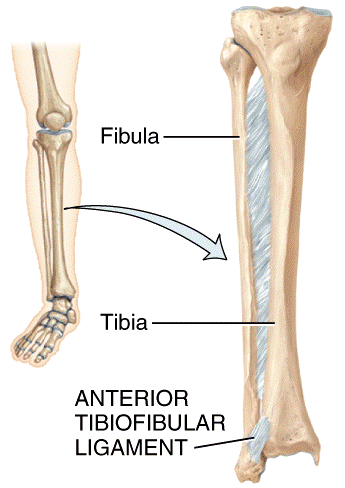
What type of joint is shown in the diagram?
- a) Suture
- b) Syndesmosis
- c) Symphysis
- d) Cartilaginous
- e) Synovial
b
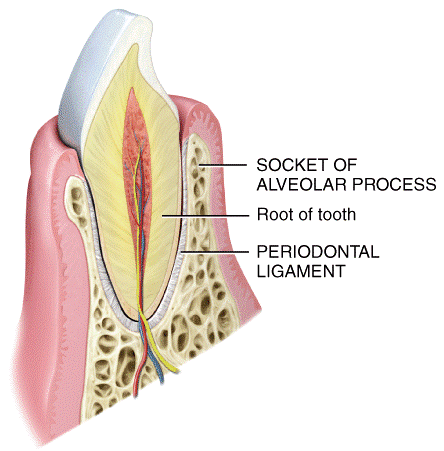
What type of joint is shown in the diagram?
- a) Suture
- b) Synostosis
- c) Symphysis
- d) Synovial
- e) Gomophosis
e
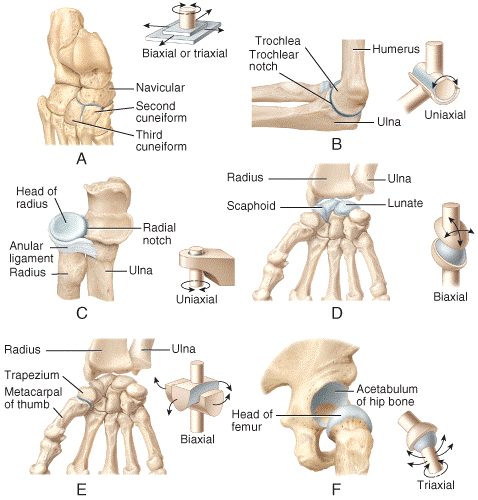
) In the figure, what represents a saddle joint?
- a) A
- b) B
- c) C
- d) D
- e) E
e
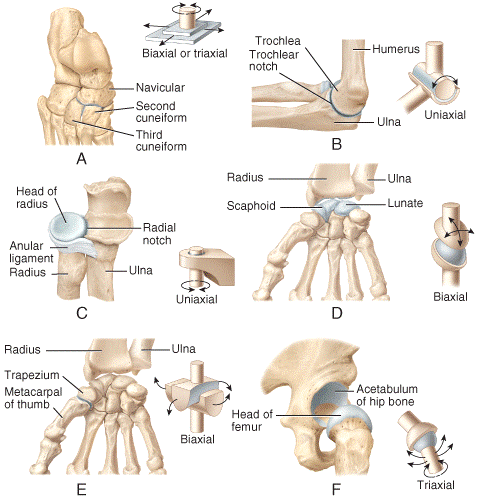
) In the diagram, what represents a pivot joint?
- a) A
- b) B
- c) C
- d) D
- e) E
c
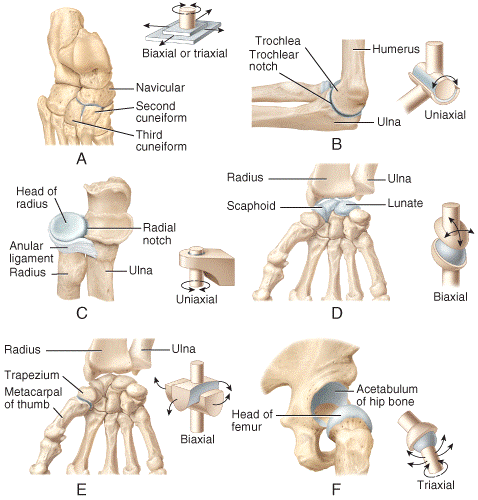
Which of the joints shown in the figure is classified as a multiaxial joint?
- a) B
- b) C
- c) D
- d) E
- e) F
e
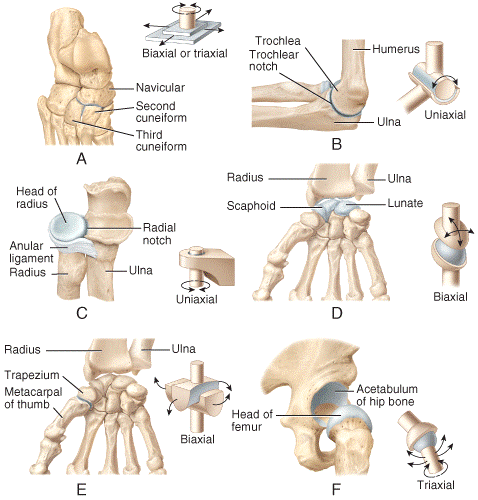
Which of the joints shown in the figure is classified as a biaxial joint?
- a) B
- b) C
- c) D
- d) E
- e) More than one selection is correct
e
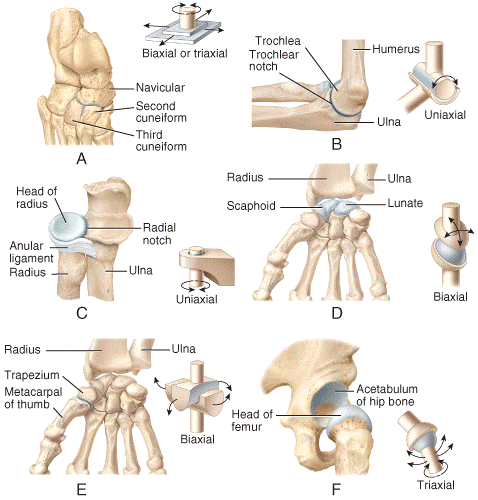
Which of the joints shown in the figure is classified as a monaxial joint?
- a) A
- b) B
- c) C
- d) D
- e) B and C
e
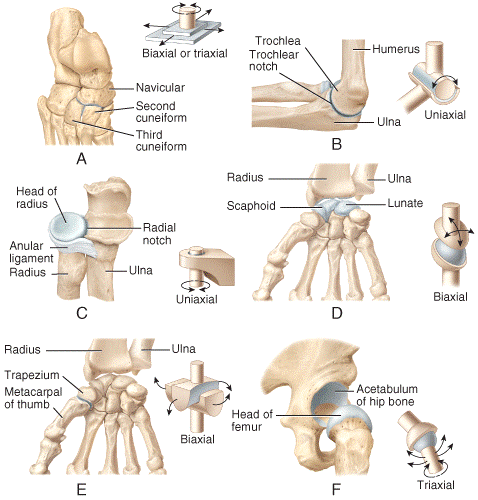
Which of the joints shown in the figure represents a condyloid joint?
- a) A
- b) B
- c) C
- d) D
- e) E
d
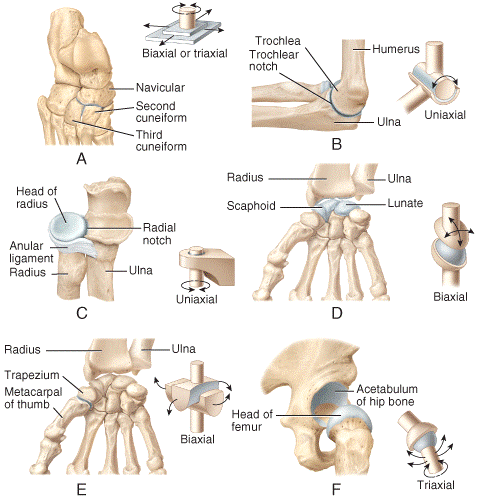
Which of the joints shown in the figure only permits back-and-forth and side-to-side movements between the articulating bones?
- a) A
- b) B
- c) C
- d) Both A and B
- e) Both A and C
a
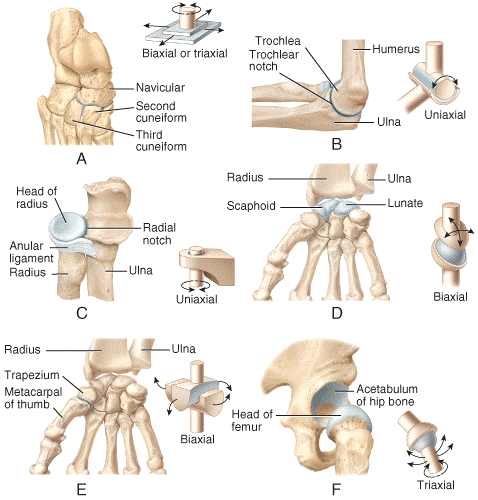
Which of the joints shown in the figure only permits back-and-forth and side-to-side movements between the articulating bones?
- a) A
- b) B
- c) C
- d) Both A and B
- e) Both A and C
a
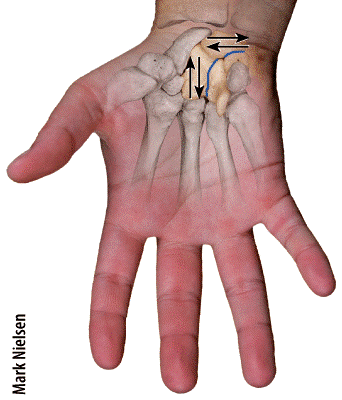
Which type of joint permits this type of movement? 1. Synovial joint 2. Cartilaginous joint 3. Fibrous joint
- a) 1 only
- b) 2 only
- c) 3 only
- d) Both 1 &2
- e) Both 2 & 3
a
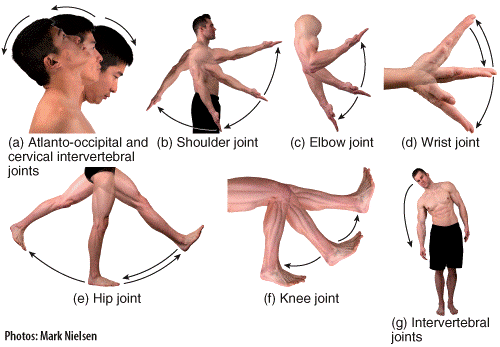
Which of the panels in the figure shows a movement called lateral flexion?
- a) B
- b) F
- c) G
- d) D
- e) C
c
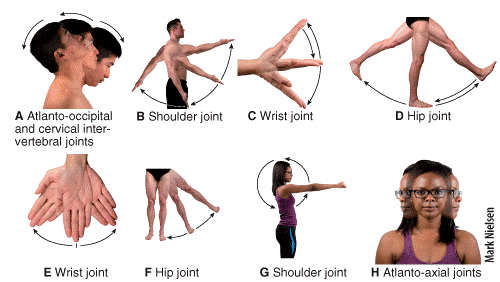
Which of the following types of movement is shown in diagram E?
a) supination
b) circumduction
c) pronation
d) rotation
e) adduction
e
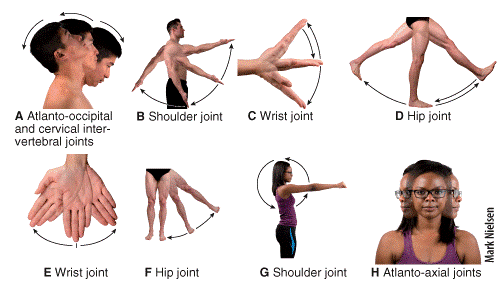
) Which of the following labeled panels in the figure shows hyperextension?
a) C
b) E
c) F
d) G
e) I
a
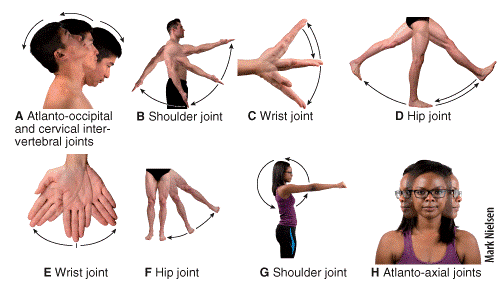
Which of the following labeled panels in the figure shows flexion?
- a) E
- b) F
- c) C
- d) G
- e) H
c

Which of the following labeled panels in the figure shows extension?
a) E
b) D
c) F
d) G
e) I
b
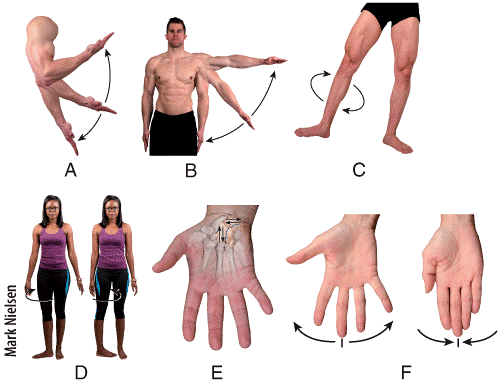
Which two panels in the figure show a movement of a bone away from the midline of the body?
a) A and B
b) B and D
c) D and E
d) F and A
e) B and F
e
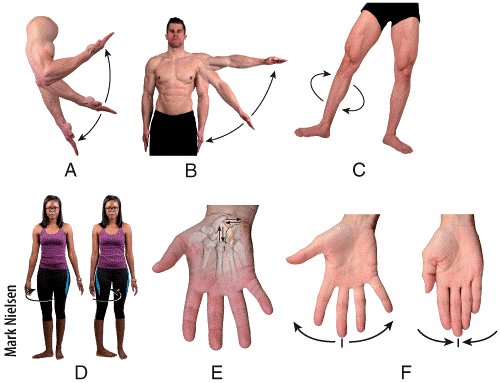
Which diagram shows a movement of a distal end of a body part in a circle, in a continuous
a) A
b) B
c) C
d) D
e) F
c
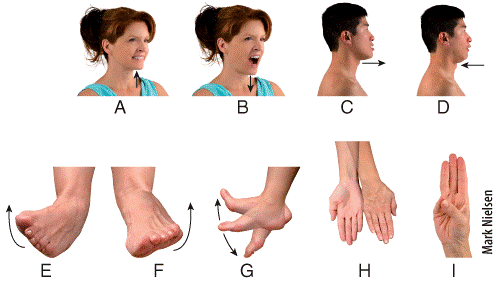
Which panel in the figure shows an example of the movement termed elevation?
- a) A
- b) B
- c) E
- d) F
- e) G
a

Which panel in the figure shows an example of the movement termed inversion?
- a) B
- b) D
- c) E
- d) F
- e) G
c
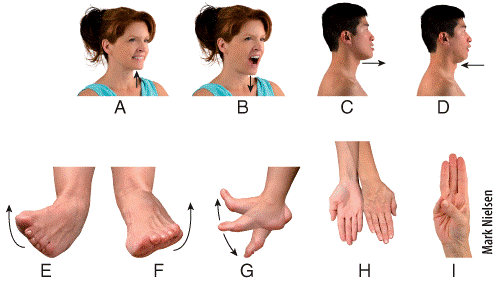
Which panel in the figure shows an example of the movement termed retraction?
a) A
b) B
c) C
d) D
e) I
d
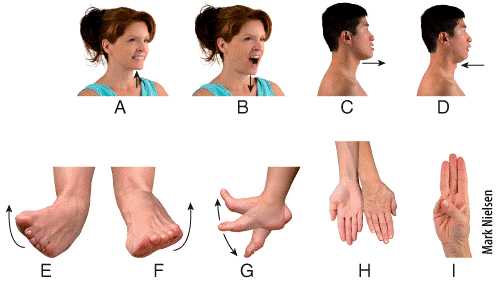
Which panel in the figure shows an example of the movement termed supination?
- a) E
- b) F
- c) G
- d) H
- e) I
d
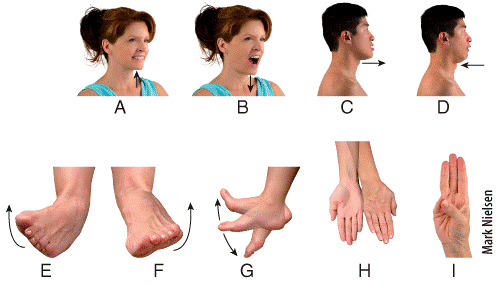
Which panel in the figure shows an example of the movement termed opposition?
a) E
b) F
c) G
d) H
e) I
e
Which of the following is a degenerative joint disease in which joint cartilage is gradually lost due to a combination of aging, obesity, wear and abrasion of the joints?
- a) gouty arthritis
- b) Lyme disease
- c) bursitis
- d) osteoarthritis
- e) synovitis
d
Which of the following is an autoimmune disease that affects the joints?
a) gouty arthritis
b) Lyme disease
c) arthroplasty
d) osteoarthritis
e) rheumatoid arthritis
e
Which of the following diseases is characterized by sodium urate crystals being deposited in the soft tissues of joints?
a) gouty arthritis
b) Lyme disease
c) ankylosing spondylitis
d) osteoarthritis
e) rheumatoid arthritis
a
Which of the following is a correct description of arthroplasty?
a) resurfacing of cartilage in a joint
b) reshaping of the ends of the bones in a joint
c) surgically replacing a joint with an artificial joint
d) injection of synovial fluid into the joint
e) a, b, and d
c
) Based on the structural classification of joints, which of the following is a fibrous joint?
a) Synchondrosis
b) Synovial joint
c) Symphysis
d) Syndesmosis
e) Diarthrosis
d
A condition in which a muscle or muscle and tendon is stretched or partially torn is called
- a) bursitis.
- b) a sprain.
- c) a strain.
- d) a dislocation.
e) an arthrosis
c
Which ligament limits hyperextension of the knee and prevents the anterior sliding of the tibia on the femur?
a) Fibular collateral ligament
b) Anterior cruciate ligament
c) Posterior cruciate ligament
d) Patellar ligament
e) Arcuate popliteal ligament
b
A joint in which there is a complete fusion of two separate bones into one bone is called a
- a) synchondrosis.
- b) syndesmosis.
- c) symphysis.
- d) diarthrosis.
- e) synostosis.
e
Which of the following is NOT an anatomical component of the elbow?
a) articular capsule.
b) ulnar collateral ligament.
c) radial collateral ligament.
d) anular ligament of the radius.
e) tendon of the biceps brachii muscle.
e
Bursae are saclike structures that are commonly found between bone and
- a) skin.
- b) muscle.
- c) ligaments.
- d) tendons.
e) all the other answer selections
e
The hormone relaxin stimulates changes that lead to increased range of motion in the
a) shoulder joint.
b) pubic symphysis.
c) temporomandibular joint
d) knee joint.
e) coronal suture.
b
Disuse of a limb, like would occur when the limb is in a cast, leads to muscular atrophy and _____ of the affected joint.
a) increased range of motion
b) decreased range of motion
c) increased fluid accumulation in bursa
d) loosening of the tendons
e) chronic inflammation
b
Which of the following is NOT a factor that influences the type of movement and range of motion possible at a synovial joint?
a) structure of the articulating bones.
b) strength and tension of the joint ligaments.
c) use of the joint.
d) arrangement and tension of the muscles.
e) hormones.
c
Which feature goes with the knee joint?
- a) medial and lateral menisci
- b) glenoid labrum
- c) radial annular ligament
- d) zona orbicularis
e) acetabular labrum
a
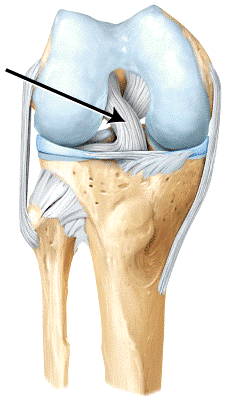
The line is pointing to the _____ ligament.
a) fibular collateral
b) posterior cruciate
c) oblique popliteal
d) anterior cruciate
d
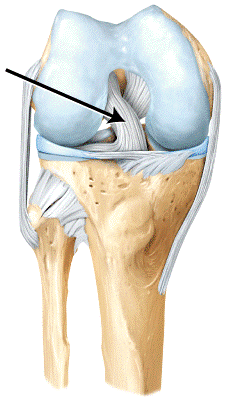
The line is pointing to the _____.
a) lateral meniscus
b) medial meniscus
c) anterior cruciate ligament
d) posterior cruciate ligament
a
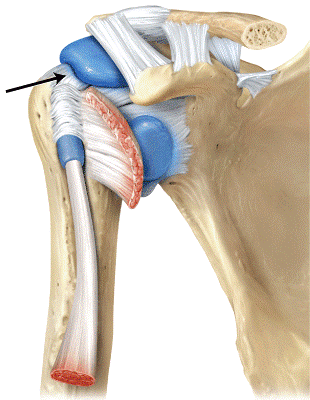
The line is pointing to the _____ ligament.
a) coracoacromial
b) acromioclavicular
c) glenohumeral
d) coracohumeral
d
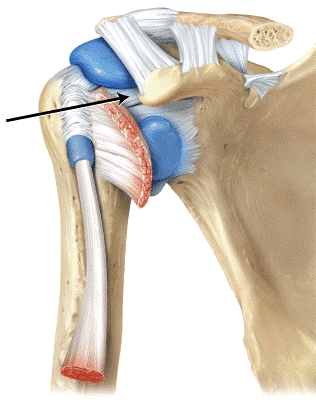
The line is pointing to the _____ ligaments.
a) coracoacromial
b) acromioclavicular
c) glenohumeral
d) coracohumeral
c